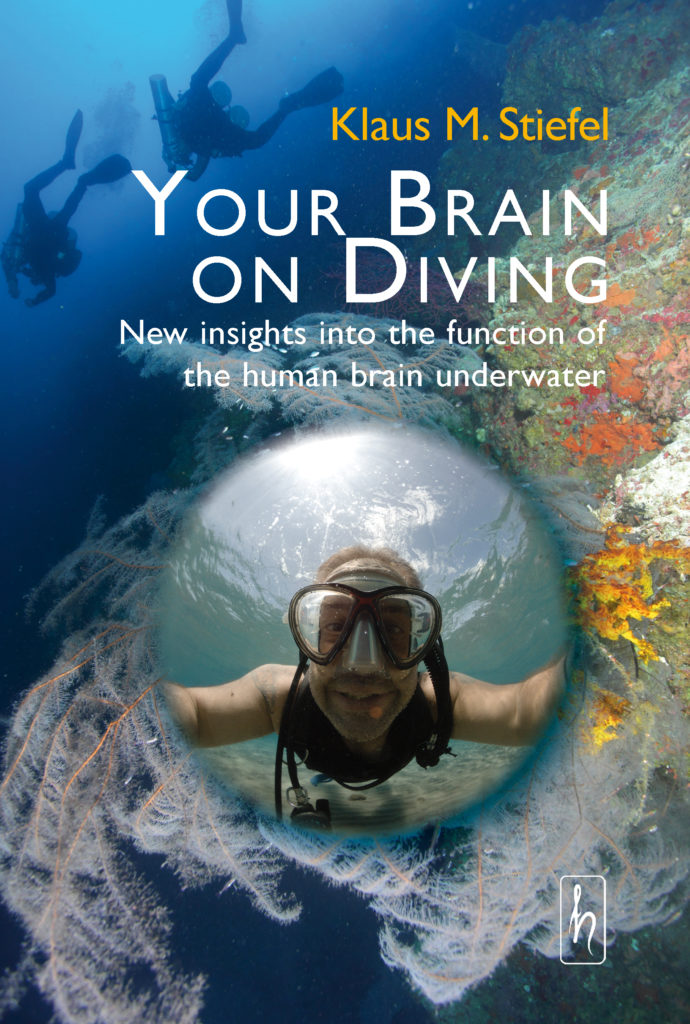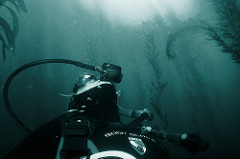Tech Diving for Coral Reef Biologists
This article, and the sister article “Deep Coral Reefs For Tech Divers” aims to bring two communities, tech divers and deep coral reef researchers, together who will profit greatly from mixing each others’ skills and interests.
I am writing this as I am a tech diver (PADI Tech Deep instructor, and trimix/CCR trained diver) as well as a biologist interested in deep reefs. I’m neither the biggest tech diving ace known to Neptune nor the most highly published fish biologist; but I am sufficiently well versed in both to explain to one community what the other is doing. This blog post is based to a good degree on questions which fellow biologists asked me about deep diving.
So, let’s look at a few key concepts which will give you, the coral reef biologist/marine biologist/fish biologist, an idea about the art of deep diving:
Tech versus Rec Diving
“Recreational diving” is considered what your average ocean-loving tourist is doing: dives with a single tank, with either air or nitrox (containing typically 32% oxygen). Recreational dives lead to depths of less than 40 meters, with no planned decompression, and not into caves or the very insides of shipwrecks. Awesome dives can be had in this way, of course.
Any dive going beyond what a recreational dive entails is a tech dive. In the context of deep reef biology, these would be dives deeper than 40 meters, and would include planned decompression stops (cave and wreck dives are also typically tech dives). The divers have to stop for pre-determined times at pre-determined depths on their way up to let the dissolved nitrogen leave their body in a gradual way, so that no harmful bubbles form (the cause of decompression sickness). These are the decompression stops, not to be confused with safety stops, which just add a bit of extra safety cushion to a rec dive.
Tech divers will carry more than one tank, and typically the 3+ tanks they bring on a dive will contain different breathing gases, with higher oxygen percentages for the tanks from which the divers breathe in the shallow, later parts of the dive. Sometimes the breathing gases contain Helium, to reduce inert gas narcosis at depth.
All of these procedures of course take a lot of training and …
Dive Planning
An important aspect of tech diving is that the dives are planned to a much greater degree than recreational dives. While a recreational dive plan might be, “no deeper than 20 m, we’ll swim to the right and turn around once the first diver is down to 100 bar”, the planning for a tech dive will have precise depths at precise times, and several back-up plans should anything go wrong (such as the loss of a decompression gas).
The plans are typically figured out with software before the dive, written down on slates, and executed precisely, with each step communicated between the tech divers during the dives. There is no swimming a bit deeper because you feel like it during a tech dive.
Redundancy
Another big difference between recreational and tech diving is that tech divers carry a lot of redundant gear. Surfacing to solve a problem (snapped mask strap, let’s just ascend and call the dive …) is just not an option. Masks, and other things wich are necessary for the completion of the dive (dive computers…) have to be brought twice on a tech dive.
One way to compare tech and rec diving is to akin the difference between a Sunday hike in the woods compared to an ascend in the Himalayas. The latter needs much more training, planning and equipment (also much more fitness, which is not really the case in rec vs tech diving, even though fitness is always good in diving).
Open versus Closed Circuit/Rebreathers
An issue which I found several of my coral bio friends unclear about is what the difference between tech and rebreather diving is. A rebreather is a diving device which recycles the exhaled air by chemically removing the CO2 and adding the consumed oxygen. Rebreathers are excellent tools for deeper dives since they allow a diver to dive longer with the same amount of gas – and gas consumption is a crucial for deep dives.
It’s perfectly possible to do a chill dive to 18 meters with a rebreather. So, not every rebreather dive is a tech dive (even though they are surely complex devices) and not every tech dive is a rebreather dive. It’s of course possible to do a tech dive without a rebreather, with regular tanks. The gas from these tanks is directly exhaled into the environment, hence this kind of diving is called open circuit diving. A rebreather in contrast, where the air goes in a loop and is recycled and then inhaled again, is called closed circuit diving. Closed-circuit rebreathers are often abbreviated as CCRs.
Typically, the first steps into tech diving are done in an open circuit configuration, with 3 tanks, and rebreathers are a possible second step. It’s worth noting that rebreathers are expensive to buy and to maintain, and are complex to set up before a dive. They are great tools, but not simple tools. As a tech instructor, I can get a skilled motivated (rescue & nitrox) diver to the point where he or she can do safe decompression dives to 50 meters in a week and a half; Learning to do deep dives on rebreathers is a much more long-term project. I myself am trained to dive on a Pelagian rebreather, but have sold my device, and would need serious re-training to dive a CCR again after a few years of not diving one.
The video below shows the components of a rebreather:
I hope these explanations are useful – there is of course MUCH more to learn should you really want to get into tech diving, but this blog post hopes to clarify some fundamental issues which can also help you decide if tech diving even is for you.
Your Brain on Diving
I recently published an eBook on the effects which diving has on human brains. If you are interested in diving deep, it should be of interest to you. The book explains insights from the scientific literature on the topic and goes beyond what you’ll hear even in tech diving courses. Here it is:


